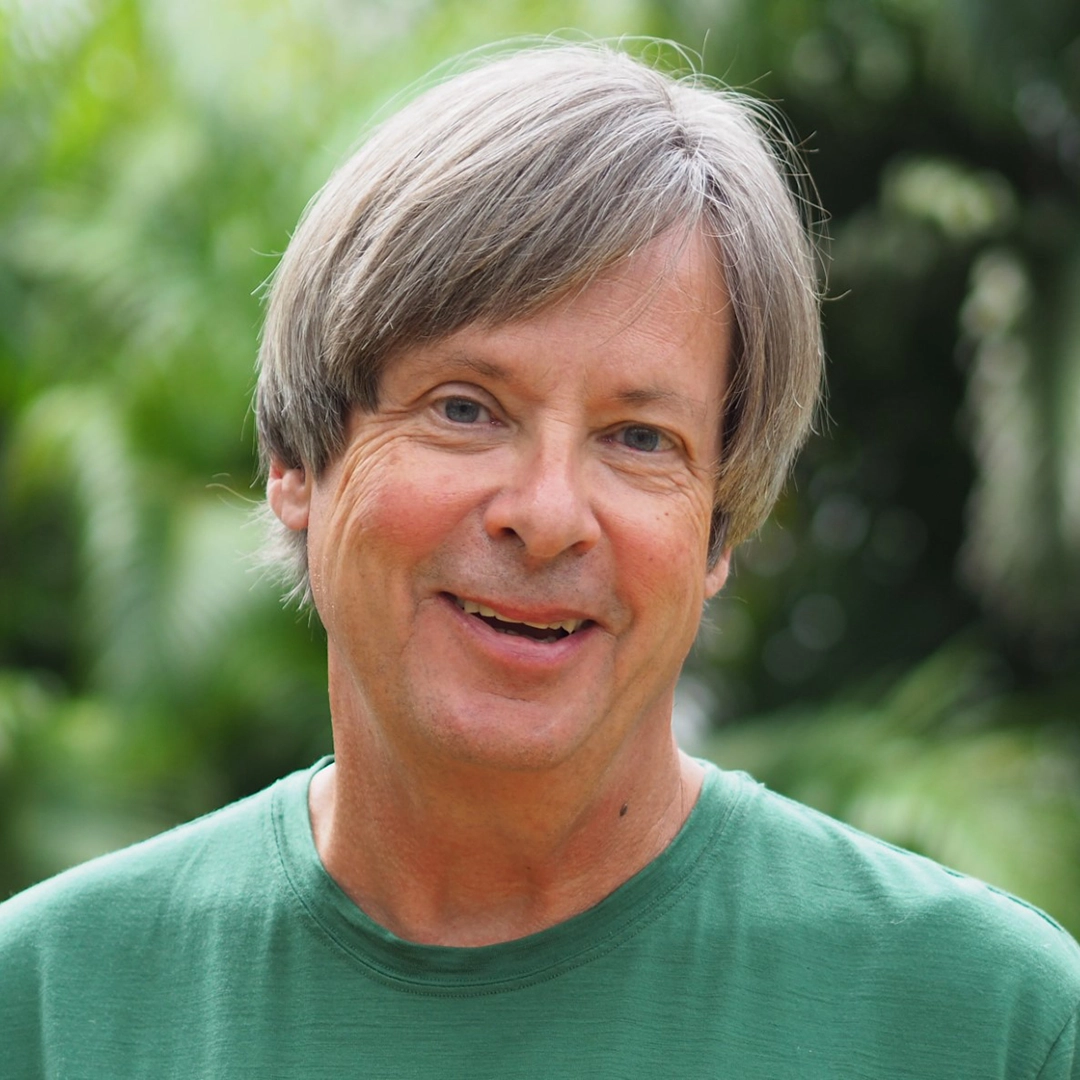by Jessica Giles | September 1, 2020
Three Florida Athletes Rediscover Their Sport During COVID-19
A racecar driver, swimmer and runner trade in speed and socialization for silence and solitude
Most sports fans are still weeping into their foam fingers over all the primetime sporting events that COVID-19 canceled or postponed this year. March Madness, the Stanley Cup, the Masters, even the Olympics weren’t immune to the pandemic’s fallout.
And it wasn’t just the Lebron James’s of the world that felt the impact, everyday people who cherish their weekly running group or cheering on their son at little league practice had to say a hasty goodbye to these rituals. But even in the absence of crowds and companionship, some athletes have discovered a whole new side to their sport.
LUCKY MEISENHEIMER

You may know Lucky for his critically acclaimed novel The Immune or maybe for that one time he broke the world record for swimming with his foot in his mouth or he’s your dermatologist. Needless to say, Doc Lucky likes to keep himself busy. But if you’re a swimmer, then you likely know him best for his lake swim that has amassed a cult-like following around the world. Deemed a historic event by the Historical Society of Central Florida, Lucky’s Lake Swim in Orlando began in 1989 as a small group of friends who loved open-water swimming, but much like anything that Lucky touches, it morphed into something larger than life. As word spread about this daily swim across Lake Cane, more and more people began showing up in Lucky’s yard hoping to join. Today, it’s a bucket list item for open-water swimmers around the globe, and it’s commemorated as such. Once you complete a lap of the lake, your signature joins thousands of others on the back of Lucky’s house. The more crossings you do, the more bragging rights—and swag—you get. And take heart, the Lake Cane Monster, which swimmers have affectionaly named Slimebo, keeps the gators at bay. Sightings of this slug-like creature are rare—some might say, nonexistent—but if you feel something gooey brush your leg, just know you’ve got company.
The lake swim’s humble beginnings: I think it was around ’90 or ’91, we took a picture one Saturday morning because we had 12 people show up, and I said at the time, “I want to get a picture because we may never have this many people together again.” [laughs] And the record now is 474.
How COVID-19 brought him back to the early days: Lake swimming is really kind of a solo, individual sport. Your face is in the water, and you’re plugging along. You’re kind of out there on your lonesome. In the early years, there were a lot of days I ended up swimming by myself. Nobody showed up.
The pandemic’s silver lining: The lake swim slowed down a little bit during that time, but that gave me more time. I’m probably better known internationally because I have the world’s largest yo-yo collection. I wrote the book on yo-yo collecting. So I used my extra time when I was away from work, I started a live yo-yo show and that is still ongoing. So COVID-19 affected me that way, too. So that was a silver lining and got me doing something that I’ve talked about doing for years.

The swim’s international appeal: It’s absolutely a bucket list thing for people. People have actually made it their destination point. I remember there was one couple, they were from one of the Scandinavian countries, and I think they had something they were doing in Texas. But they drove all the way over to Orlando just to swim the lake.
Why lake swimming: I’ve always said one of the best ways to protect your waterways is to get people in them swimming because what you swim in, you care about. If you’re not swimming in it and you’re not using it, you don’t really care about it, and that’s when pollution starts happening.
Lucky’s motto: My goal is I just want to suck as much out of life as I can while I’m here on Earth, and so far, so good.
HURLEY HAYWOOD

Hurley Haywood’s default speed is 200 miles per hour. How could it not be? The motor sports icon spent more than four decades behind the wheel of some of the fastest cars ever made and collected quite a few high-profile wins along the way: five first-place finishes at the Rolex 24 at Daytona, three-time Le Mans champion and two wins at the 12 Hours of Sebring. Slowing down was foreign to perhaps no one more than Haywood. But just like the rest of us, the speed king was forced to pump the brakes when COVID-19 erupted and found that sometimes life is better when you’re cruising.
How Hurley’s life took a complete turn during the pandemic: My whole life has been at high speed and traveling around and seeing people and now suddenly, we’ve been quarantined in the house. I found that it’s not too bad to be sort of isolated, and it’s taught me anyway that life could go on at a much slower pace. I think that everybody is so accustomed to doing things as quickly as possible, and now suddenly, when all of that excess is taken away, you learn to appreciate things that you never thought about in the past.
The hardest part about being in quarantine: I’m a people person, and I have been doing that all my life, and it’s just part of what we do. We have our racecars that we drive but the racecars are managed by a group of people—your team, your teammates and your crew. That’s been difficult to get over. Our industry basically has stopped, as all major sports have stopped. So when your family has been taken away from you, that’s hard to deal with.
How racing unexpectedly prepared him for quarantine: Part of my reason why I was successful in racing was I was patient, and I didn’t push it. When the move was right, and I could make the move without jeopardizing my car, I did. And that’s the reason why I won so many races. So you know we just have to be patient and this all will pass.
What a “Sunshine State of Mind” means to him: Well, I always look at the glass half full, rather than half empty. We live in the Sunshine State, and sunshine is something that brings a smile to everybody’s face. I think we have to do that and look at our neighbors in a little different way. One of the things that I’ve seen that’s really encouraging is how our community here in St. Augustine has come together to help other people that are maybe less fortunate. It’s pulling together to help our neighbors, and we all can get through this thing together.
ROBERT ‘RAVEN’ KRAFT

Robert ‘Raven’ Kraft has run through hail and lighting storms, even a hurricane. Now, he can add a pandemic to his list of hazardous runs. To some, these are perfect excuses to take the day off, but Kraft has a streak to uphold—a 45-year streak, to be exact. Since January 1, 1975, the near 70-year-old has laced up his New Balances and gone for an eight-mile run down South Beach every single day, and he’s become somewhat of a global legend for it. Every afternoon when he arrives at the 5th Street Lifeguard Station to start his route, he always finds runners there to meet him. People from as far away as Germany, Japan and England journey to Miami to “run with Raven” and receive a personalized nickname from him. But when COVID-19 closed the beach Kraft treks every day, his streak was in peril. With a little help from the South Beach community and a whole lot of gumption, Kraft proved that some New Year’s Resolutions really can stick.
How it all began: I was a songwriter in Nashville, and I came back here—this is where I grew up, down here in South Beach. Someone got a hold of a song I wrote when I was in Nashville, and I didn’t get credit. I didn’t know about copyrighting. So I was pretty angry for a couple years, and I ran into these fighters from the old 5th Street Gym, where Muhammed Ali trained, and they got me into running. I wasn’t going eight miles a day every day then, but I decided on January 1, 1975 I’d go for a year, eight miles a day. And I just kept going.
The lengths he’ll go to keep the streak: They closed the beach on March 18. I have spinal stenosis, which is very painful in my back. So I thought to myself, “Well, I gotta keep doing the run. I’ll just be real careful and try to find all the sand I can along the way.” There’s grass, there’s cement, so I was able to do it but everybody saw the pain I was in. My fellow runners and neighbors, I guess they got a hold of some city officials, and I got permission on April 1 to go out there after 14 days of cement and uneven pathways. So I did 70 straight days on the sand all by myself. It turned out to be 573 miles.
How the pandemic changed his daily run: You know, I normally have about seven to 10 people a day, and we talk and we socialize. Obviously after 45 years it’s not too fast. So, the first thing I noticed was the footprints. There was no footprints out there, except for seagulls or pigeons. And then every sound is magnified because there was no boats or nothing. A leaf could be drifting my way and I’d hear it.
If he never returned to Florida: Probably all this would never have happened if I didn’t come back here, meet those guys on the beach, and they asked me to join. I would never have thought of running and how much it changed my life and others because I’ve inspired and motivated people from all over the world. They tell me. I’ve had people from 97 countries, every state, every birthday.
The story behind one his favorite nicknames, “Close Call”: That first run with me, him and I take off with some other people and a dog comes right between us. And I turned to him and said, “Boy that was a close call.” He said, “Let me tell you about another close call.” He was working at the World Trade Center on 9/11, and he didn’t go to work that day. He had run a marathon the day before.
Check out all four installments of our Sunshine State of Mind series highlighting the stories of some of Florida’s most notable figures from singer-songwriter Rita Coolidge to celebrity chef Art Smith to best-selling author Carl Hiaasen.
Sunshine State of Mind: Chefs Edition
Sunshine State of Mind: Musicians Edition
Sunshine State of Mind: Authors Edition





